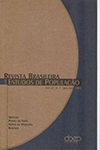Estimated indicators of education based on the harmonization of various sources of data
Keywords:
Education, Educational demography, Enrollment ratiosAbstract
Student enrollment data are collected by the School Census in Brazil in order to allow planning of equal distribution of educational resources among the Brazilian municipalities. Indicators of school levels may also help in such distribution, since they identify which municipalities show student enrollments that are higher than the actual population of school age. Indicators of school attendance are clearly defined in theory, but practical problems have been reported and theoretically unacceptable values have been generated. We found no studies suggesting how these values might be adjusted to acceptable values before being published. Calculation procedures for such estimates are defined in the present study. Methodologies and concepts were also refined in order to be used and replicated, using available databases from the School and Dwelling Censuses. The methodologies that were used generated adequate results, one interesting finding being that in the Southern and Southeastern States of Brazil school attendance is already virtually universal. In the Northeastern and Northern regions, on the other hand, attendance is still unsatisfactory, which indicates the need for specific federal intervention.Downloads
Downloads
Published
How to Cite
Issue
Section
License
Papers published in Rebep are original and protected under the Creative Commons attribution-type license (CC-BY). This license allows you to reuse publications in whole or in part for any purpose, free of charge, even for commercial purposes. Any person or institution can copy, distribute or reuse the content, as long as the author and the original source are properly mentioned.

